RBS 2010 Annual Report Download - page 398
Download and view the complete annual report
Please find page 398 of the 2010 RBS annual report below. You can navigate through the pages in the report by either clicking on the pages listed below, or by using the keyword search tool below to find specific information within the annual report.-
 1
1 -
 2
2 -
 3
3 -
 4
4 -
 5
5 -
 6
6 -
 7
7 -
 8
8 -
 9
9 -
 10
10 -
 11
11 -
 12
12 -
 13
13 -
 14
14 -
 15
15 -
 16
16 -
 17
17 -
 18
18 -
 19
19 -
 20
20 -
 21
21 -
 22
22 -
 23
23 -
 24
24 -
 25
25 -
 26
26 -
 27
27 -
 28
28 -
 29
29 -
 30
30 -
 31
31 -
 32
32 -
 33
33 -
 34
34 -
 35
35 -
 36
36 -
 37
37 -
 38
38 -
 39
39 -
 40
40 -
 41
41 -
 42
42 -
 43
43 -
 44
44 -
 45
45 -
 46
46 -
 47
47 -
 48
48 -
 49
49 -
 50
50 -
 51
51 -
 52
52 -
 53
53 -
 54
54 -
 55
55 -
 56
56 -
 57
57 -
 58
58 -
 59
59 -
 60
60 -
 61
61 -
 62
62 -
 63
63 -
 64
64 -
 65
65 -
 66
66 -
 67
67 -
 68
68 -
 69
69 -
 70
70 -
 71
71 -
 72
72 -
 73
73 -
 74
74 -
 75
75 -
 76
76 -
 77
77 -
 78
78 -
 79
79 -
 80
80 -
 81
81 -
 82
82 -
 83
83 -
 84
84 -
 85
85 -
 86
86 -
 87
87 -
 88
88 -
 89
89 -
 90
90 -
 91
91 -
 92
92 -
 93
93 -
 94
94 -
 95
95 -
 96
96 -
 97
97 -
 98
98 -
 99
99 -
 100
100 -
 101
101 -
 102
102 -
 103
103 -
 104
104 -
 105
105 -
 106
106 -
 107
107 -
 108
108 -
 109
109 -
 110
110 -
 111
111 -
 112
112 -
 113
113 -
 114
114 -
 115
115 -
 116
116 -
 117
117 -
 118
118 -
 119
119 -
 120
120 -
 121
121 -
 122
122 -
 123
123 -
 124
124 -
 125
125 -
 126
126 -
 127
127 -
 128
128 -
 129
129 -
 130
130 -
 131
131 -
 132
132 -
 133
133 -
 134
134 -
 135
135 -
 136
136 -
 137
137 -
 138
138 -
 139
139 -
 140
140 -
 141
141 -
 142
142 -
 143
143 -
 144
144 -
 145
145 -
 146
146 -
 147
147 -
 148
148 -
 149
149 -
 150
150 -
 151
151 -
 152
152 -
 153
153 -
 154
154 -
 155
155 -
 156
156 -
 157
157 -
 158
158 -
 159
159 -
 160
160 -
 161
161 -
 162
162 -
 163
163 -
 164
164 -
 165
165 -
 166
166 -
 167
167 -
 168
168 -
 169
169 -
 170
170 -
 171
171 -
 172
172 -
 173
173 -
 174
174 -
 175
175 -
 176
176 -
 177
177 -
 178
178 -
 179
179 -
 180
180 -
 181
181 -
 182
182 -
 183
183 -
 184
184 -
 185
185 -
 186
186 -
 187
187 -
 188
188 -
 189
189 -
 190
190 -
 191
191 -
 192
192 -
 193
193 -
 194
194 -
 195
195 -
 196
196 -
 197
197 -
 198
198 -
 199
199 -
 200
200 -
 201
201 -
 202
202 -
 203
203 -
 204
204 -
 205
205 -
 206
206 -
 207
207 -
 208
208 -
 209
209 -
 210
210 -
 211
211 -
 212
212 -
 213
213 -
 214
214 -
 215
215 -
 216
216 -
 217
217 -
 218
218 -
 219
219 -
 220
220 -
 221
221 -
 222
222 -
 223
223 -
 224
224 -
 225
225 -
 226
226 -
 227
227 -
 228
228 -
 229
229 -
 230
230 -
 231
231 -
 232
232 -
 233
233 -
 234
234 -
 235
235 -
 236
236 -
 237
237 -
 238
238 -
 239
239 -
 240
240 -
 241
241 -
 242
242 -
 243
243 -
 244
244 -
 245
245 -
 246
246 -
 247
247 -
 248
248 -
 249
249 -
 250
250 -
 251
251 -
 252
252 -
 253
253 -
 254
254 -
 255
255 -
 256
256 -
 257
257 -
 258
258 -
 259
259 -
 260
260 -
 261
261 -
 262
262 -
 263
263 -
 264
264 -
 265
265 -
 266
266 -
 267
267 -
 268
268 -
 269
269 -
 270
270 -
 271
271 -
 272
272 -
 273
273 -
 274
274 -
 275
275 -
 276
276 -
 277
277 -
 278
278 -
 279
279 -
 280
280 -
 281
281 -
 282
282 -
 283
283 -
 284
284 -
 285
285 -
 286
286 -
 287
287 -
 288
288 -
 289
289 -
 290
290 -
 291
291 -
 292
292 -
 293
293 -
 294
294 -
 295
295 -
 296
296 -
 297
297 -
 298
298 -
 299
299 -
 300
300 -
 301
301 -
 302
302 -
 303
303 -
 304
304 -
 305
305 -
 306
306 -
 307
307 -
 308
308 -
 309
309 -
 310
310 -
 311
311 -
 312
312 -
 313
313 -
 314
314 -
 315
315 -
 316
316 -
 317
317 -
 318
318 -
 319
319 -
 320
320 -
 321
321 -
 322
322 -
 323
323 -
 324
324 -
 325
325 -
 326
326 -
 327
327 -
 328
328 -
 329
329 -
 330
330 -
 331
331 -
 332
332 -
 333
333 -
 334
334 -
 335
335 -
 336
336 -
 337
337 -
 338
338 -
 339
339 -
 340
340 -
 341
341 -
 342
342 -
 343
343 -
 344
344 -
 345
345 -
 346
346 -
 347
347 -
 348
348 -
 349
349 -
 350
350 -
 351
351 -
 352
352 -
 353
353 -
 354
354 -
 355
355 -
 356
356 -
 357
357 -
 358
358 -
 359
359 -
 360
360 -
 361
361 -
 362
362 -
 363
363 -
 364
364 -
 365
365 -
 366
366 -
 367
367 -
 368
368 -
 369
369 -
 370
370 -
 371
371 -
 372
372 -
 373
373 -
 374
374 -
 375
375 -
 376
376 -
 377
377 -
 378
378 -
 379
379 -
 380
380 -
 381
381 -
 382
382 -
 383
383 -
 384
384 -
 385
385 -
 386
386 -
 387
387 -
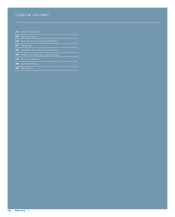 388
388 -
 389
389 -
 390
390 -
 391
391 -
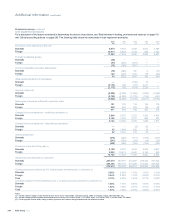 392
392 -
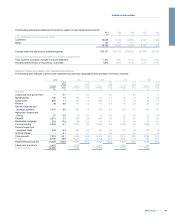 393
393 -
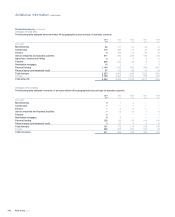 394
394 -
 395
395 -
 396
396 -
 397
397 -
 398
398 -
 399
399 -
 400
400 -
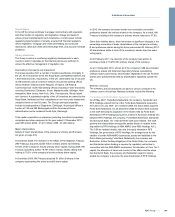 401
401 -
 402
402 -
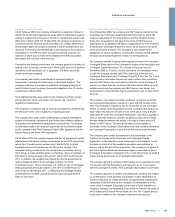 403
403 -
 404
404 -
 405
405 -
 406
406 -
 407
407 -
 408
408 -
 409
409 -
 410
410 -
 411
411 -
 412
412 -
 413
413 -
 414
414 -
 415
415 -
 416
416 -
 417
417 -
 418
418 -
 419
419 -
 420
420 -
 421
421 -
 422
422 -
 423
423 -
 424
424 -
 425
425 -
 426
426 -
 427
427 -
 428
428 -
 429
429 -
 430
430 -
 431
431 -
 432
432 -
 433
433 -
 434
434 -
 435
435 -
 436
436 -
 437
437 -
 438
438 -
 439
439 -
 440
440 -
 441
441 -
 442
442 -
 443
443 -
 444
444 -
 445
445
 |
 |
Economic and monetary environment
Global recovery has continued in 2010, but the strength of the recovery
remains unevenly spread. Although most developed countries have
avoided a double-dip, they have been unable to find a firm footing from
which to build a solid recovery. This reflects the burden of high levels of
public and private sector debt, low consumer confidence and high levels
of unemployment.
In the UK, the Group’s largest market, economic conditions improved in
2010. Total economic activity, as measured by gross domestic product
(GDP), grew by 1.3 per cent in 2010. This followed a contraction of 4.9
per cent in 2009. However, a fall in activity in the final quarter of 2010
served as a timely reminder that, while conditions are generally improving,
the recovery is fragile. The UK’s inflation rate increased sharply, reaching
3.7 per cent by the end of the year. Yet policy makers kept the main
policy rate unchanged at 0.5 per cent throughout 2010, attributing the
pick up in inflation to temporary factors such as rising commodity prices
and an increase in VAT.
The recovery has helped many of our customers. Company trading
profits grew for the first time since 2008. The unemployment rate levelled
off at around 8 per cent, which is much higher than at the start of the
recession, but still relatively low compared to the peak in other recessions.
These factors supported commercial property prices, which were 6 per
cent higher in December 2010 than they were a year earlier, according to
the International Property Databank. Most of those gains came in the first
half of the year. The residential market was less robust; house prices fell
in the second half of the year, dragging the year-on-year growth rate to -1
per cent in December 2010, according to the Nationwide index.
The US economy registered the fastest growth amongst our principal
markets. GDP grew by 2.8 per cent, following a contraction of 2.6 per
cent in 2009. Despite this, the unemployment rate remained stubbornly
high, which prompted a further loosening of monetary and fiscal policy.
Inflationary pressures were generally subdued, but picked up somewhat
towards the end of the year. Policy makers pledged to keep Fed funds
rate exceptionally low for an extended period of time to provide a
necessary support to the economic recovery.
In Ireland, hopes of a recovery in 2010 were dashed, as GDP contracted
by an estimated 0.6 per cent. This followed a 7.6 per cent reduction in
2009. The Irish government requested a financial rescue package of €85
billion in November, equivalent to about half of Ireland’s GDP.
The general improvement in economic conditions must be viewed against
abackdrop of financial market turbulence at various points in the year,
most notably the sovereign debt crisis that affected the Eurozone
periphery. This led to a marked fall in risk appetite in Q2 2010 and, again,
in Q4 2010. Equity prices fell in the banking sector and there was a ‘flight
to quality’, which pushed down long-term interest rates on government
debt in some countries. This included the UK, where the 10-year gilt rate
fell from more than 4 per cent at the start of 2010, to less than 3 per cent
in October. UK gilt yields subsequently rose in the final months of 2010,
in anticipation of interest rate rises in 2011.
The increase in risk aversion also caused some sharp currency
movements. At one point the pound was 11 per cent down against the
dollar, but sterling rallied in the second half of 2010, to end the year just
slightly lower than where it started ($1.57 from $1.61). Sterling rose by 10
per cent against the euro in the first half of the year, before giving up
most of these gains, to end the year at €1.17 (from €1.13).
The economic outlook
We expect the global recovery to be maintained, but to remain uneven.
The pace of growth in the major developed economies, including the UK
and the US, is likely to remain sluggish by historic standards, and volatile.
This reflects high levels of indebtedness, fiscal rebalancing and the
expectation that interest rates will gradually rise. Emerging markets,
especially Asia, will continue to outperform as they are less encumbered
by balance sheet strains. Moreover, growth in countries like China and
India will continue to be underpinned by the process of ‘catch-up’ with
industrial nations.
RBS Group 2010396
Additional information continued
